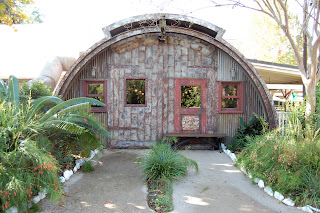The story of the area we now affectionately know as Dinoland, U.S.A. actually goes back long before the first fossils were uncovered here. Early tourists flocked to these parts for the legendary fishing in the clear waters of the Discovery River. The building pictured above was initially constructed in the 1930s to serve as a lodge for visiting anglers. To this day, you can still find a prize catch or two displayed on the walls inside.
Once the bones of a T-Rex popped up in '47, things began to change for Diggs County. People came here from all over the world, first to study the fossil finds then to capitalize on them. The Dino Institute, founded in the 1950s through grants from several major corporations and private investors, started funding organized work in the neighboring Boneyard and took over the old fishing lodge as their base of operations.
The lodge was expanded and became home to the Dino Institute's first museum (some of the original displays remain), along with Institute offices, work space and a restaurant creatively titled, "RESTAURANT."

By the late-'70s, the Dino Institute had outgrown this space and moved into a modern, custom-built facility not far away. It's in that building that the Institute's new Director, Dr. Helen Marsh, is stirring up the scientific community with controversial new methods of "studying" dinosaurs, but that's a story for another day.
Once the Dino Institute and Museum moved out, the old building was completely taken over by the professors, paleontologists and grad students. The restaurant is still there, but much of the rest of the interior is now set aside for work space and dormitories.
And the building has been expanded even further in the past 30 years. Temporary tent structures have been set up for fossil prep and this Quonset hut was added as a garage for vehicle maintenance.
Inside, an engine block is hanging above, waiting to be dropped back in, and there are parts and tools everywhere. There's even a sense of humor to the place, as the guys working on the cars seem to have used their greasy handprints to paint a dinosaur or two on the walls.









No comments:
Post a Comment